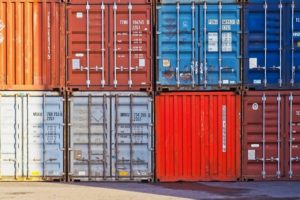 Philippine domestic trade plummeted to a historic quarterly and annual drop in the second quarter as strict quarantine measures severely curtailed business and consumption activities during the period.
Philippine domestic trade plummeted to a historic quarterly and annual drop in the second quarter as strict quarantine measures severely curtailed business and consumption activities during the period.
Domestic trade declined 77.8% in volume and 69.1% in value in the second quarter of 2020 compared to a year ago, according to data from the Philippine Statistics Authority (PSA).
The second-quarter declines were the highest recorded quarterly and annual drop since 1994, which was the earliest available comparative data from PSA’s website.
The volume of domestic trade dropped to 1.80 million tons from 8.11 million tons in the same quarter in 2019. In terms of value, domestic trade decreased to P65.12 billion in the second quarter of the year from P211.01 billion a year ago.
Domestic shipping lines earlier projected a 70% drop in cargo volumes as the country implemented community quarantines from mid-March to prevent the further spread of the coronavirus disease. While movement of cargoes should have been unhampered, other restrictions had affected the operations of cargo owners and shippers and other service providers. Airfreight was also affected as flights were suspended due to travel restrictions. Domestic commercial flights started to resume gradually only from June.
According to the Philippine Ports Authority, cargoes handled at ports under its jurisdiction reached 48.552 million metric tons (mt) in the second quarter of the year, 31% down from the 70.336 million mt handled in the same period last year.
Food and live animals remained the top commodity in terms of quantity with 0.65 million tons or a share of 36.4% to total. It was followed by commodities and transactions not classified elsewhere in the Philippine Standard Commodity Classification, and manufactured goods with 0.33 million tons (18.2%) and 0.29 million tons (16.3%), respectively.
By region, Northern Mindanao still recorded the highest quantity of traded commodities of 0.66 million tons or 36.5% share to total in the second quarter of 2020. Western Visayas ranked second with a quantity of 0.34 million tons (18.8%) and Bicol Region placed third with 0.27 million tons (15.2%).
Food and live animals also led in terms of value with P21.86 billion or 33.6% share to total. It was followed by machinery and transport equipment, and manufactured goods with P14.24 billion (21.9%) and P12.44 billion (19.1%).
Among the regions, Western Visayas ranked first with P18.98 billion or 29.2% share, followed by Northern Mindanao with P16.66 billion (25.6%) and Eastern Visayas with P7.79 billion (12%).
Western Visayas also posted the highest inflow value of all the regions with P14.94 billion or 22.9% share. It was followed by Central Visayas and Caraga with inflow values of P11.11 billion (17.1%) and P9.67 billion (14.9%), respectively. Cagayan Valley, on the other hand, had the lowest inflow value of P2.55 million.
The top three regions with favorable trade balances in the second quarter of 2020 were Northern Mindanao, P13.51 billion; Western Visayas, P4.04 billion; and Eastern Visayas, P2.07 billion.
National Capital Region, on the other hand, had the highest unfavorable trade balance value of P8.33 billion.
Almost all or 99.8% of the commodities remain traded through water (coastwise) while the remaining were through air.





